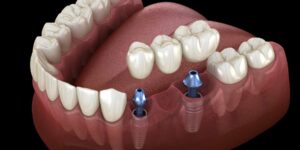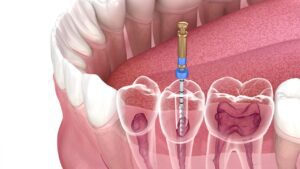In short, a root canal treatment involves the removal of an infected tooth pulp and the elimination of bacteria that have entered the tooth. Many patients experience a tooth infection and are often recommended for these treatments. Fortunately, modern-day technology has made the procedure smooth and painless.
Learn more about root canal treatment below and contact our office today.
Why a root canal treatment?
One of the most common infections of the tooth is one affecting the root canal, located at the center of the tooth structure. Bacteria found in the mouth can invade the teeth, eating deep into the pulp of the tooth. The signs and symptoms of infection include severe and prolonged toothache, sometimes unresponsive to pain medications.
Symptoms of a root canal or pulp infection include a loose tooth, pain on biting or chewing food, and pain, especially when exposed to extreme cold or hot meals. As the infection progresses and eats deep into the pulp of the tooth, the pain might disappear. The absence of the pain is not an indication of the disease resolving, but otherwise evidence of the spread of the infection into the root canal system. Advanced infections feature extreme and prolonged pain, gum swelling, pus oozing from the affected tooth, facial swelling, and discoloration of the affected tooth. Should one experience the mentioned symptoms, one needs to make an urgent visit to the dentist. 
What is the procedure?
Before the dentist recommends for a root canal treatment, a thorough and detailed dental history is taken followed by a dental examination. In addition, the dentist may recommend a dental X-ray to best understand the extent of the issue.
After the dental X-ray, the dentist will focus on preparations for the root canal treatment. The doctor will clean and numb the area. In many instances, the nerve supply to the area is usually affected, resulting in no sensation. Next, the doctor uses a rubber dam to keep the area dry during the procedure.
The doctor then drills an access hole into the tooth to remove the pulp, bacteria, and decayed nerve tissues. Root canal files are used to accomplish the procedure. Then the dentist flushes and seals the tooth. A temporary crown is placed on the tooth until the permanent one is created.
How to avoid a root canal
Maintain good dental health by brushing and flossing as recommended. In addition, visit your dentist for exams and cleanings. These techniques help detect issues early on and prevent new ones.
Learn More
Contact Quincy High Care Dentistry to learn more about protecting your smile. We offer numerous services to assist patients of all ages. Call (617) 405-4524 or book an appointment online. We look forward to meeting you.





